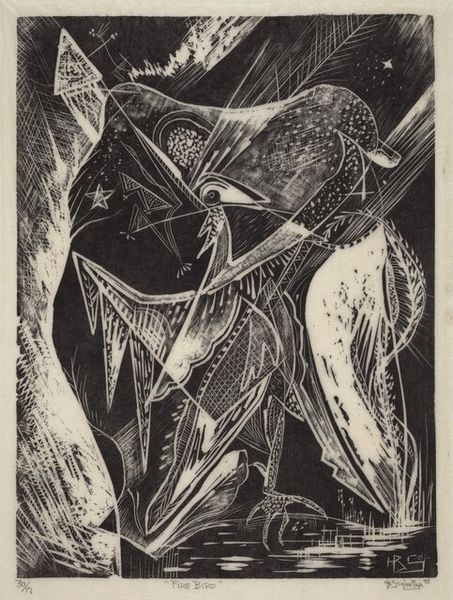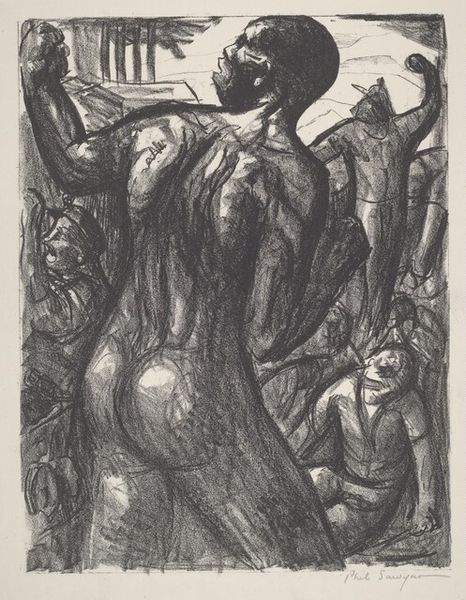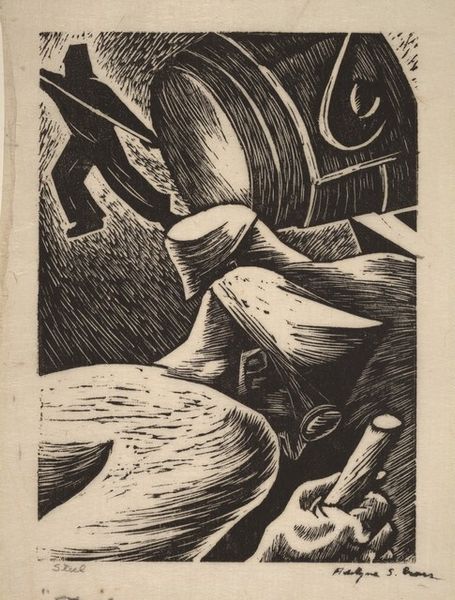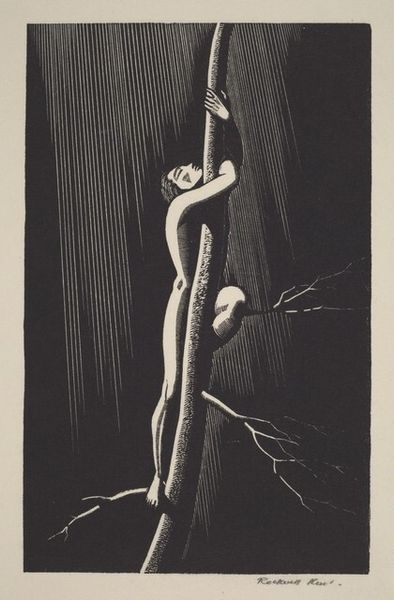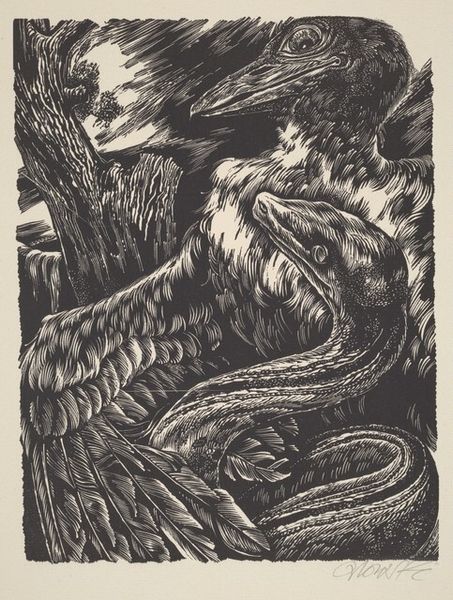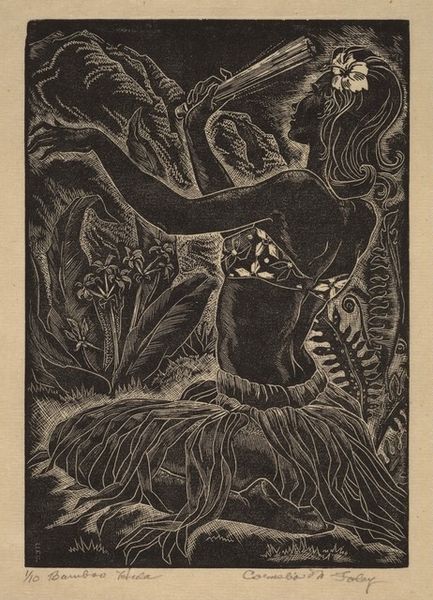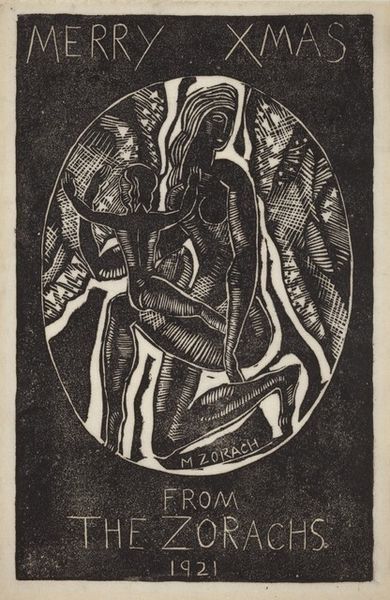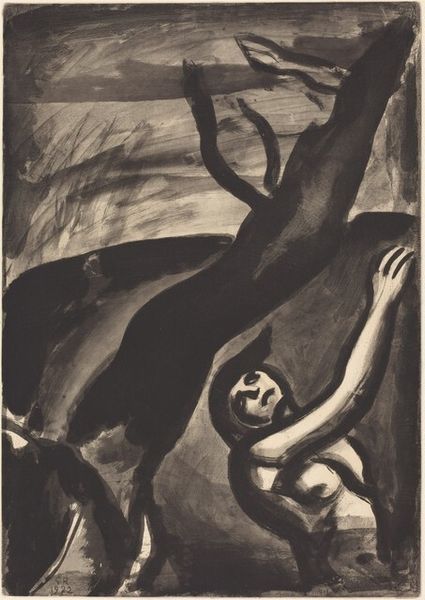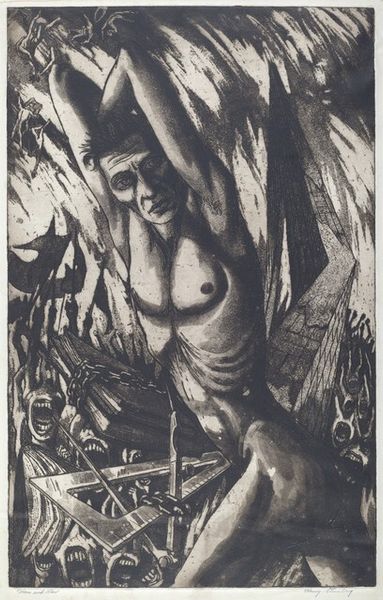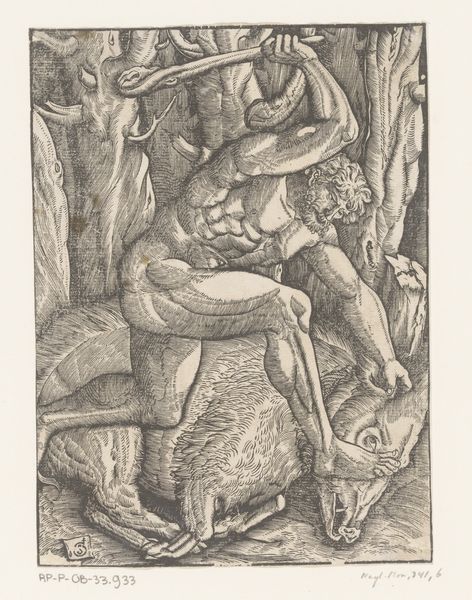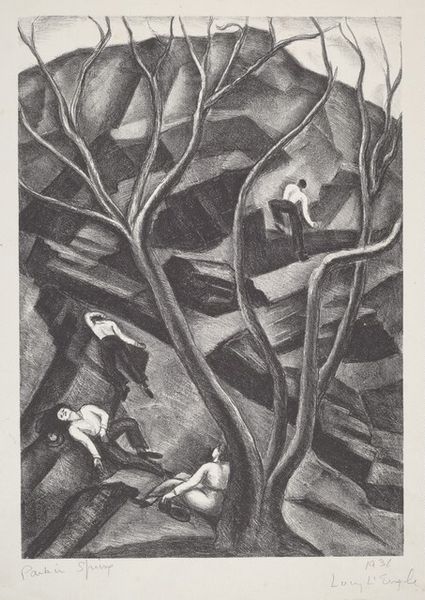
print, woodcut
#
narrative-art
# print
#
landscape
#
figuration
#
woodcut
#
history-painting
Dimensions: block: 385 x 178 mm sheet: 403 x 282 mm
Copyright: National Gallery of Art: CC0 1.0
Editor: This woodcut, "Pursuit of Happiness," was created around 1939 by Shiro Miyazaki. I find its stark black and white contrast so striking. The figures almost seem to emerge from the darkness. What stands out to you in terms of the symbolism here? Curator: The most compelling aspect is its layering of symbolic forms drawn from varied sources to produce an emotive expression of social commentary. It is evident Miyazaki layered various personal and public symbols associated with human triumph and defeat. Consider how classical depictions of the nude human form contrast sharply with symbols of mid-20th-century conflict to embody hope amid historical catastrophe. The pursuit isn't just happiness but something beyond our material struggles, would you agree? Editor: That's a great point. The devastation in the lower-left, the fallen soldiers… is the artist suggesting these figures are striving for something beyond earthly concerns, perhaps spiritual transcendence? Curator: Perhaps. The starkness of the woodcut intensifies the visual message and adds to this emotional weight, doesn’t it? What do you make of the stylized flames? They are quite interesting within the composition. Editor: The flames! Yes, now that you mention them, they seem to act like both a destructive force and a purifying element. And how that central obelisk serves almost as a beacon? It's incredibly powerful, making this more than just a historical statement. Curator: Indeed, a profound reflection on human resilience and spiritual seeking. Considering the looming war during its creation, one sees why Miyazaki intertwined those opposing visual forms into his commentary. Editor: Looking at it that way reveals new layers I hadn't considered. Thank you.
Comments
No comments
Be the first to comment and join the conversation on the ultimate creative platform.
